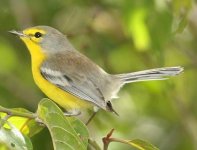Mark Newsome
Born to seawatch...
With the devastaing hurricanes currently hitting the Caribbean, what is the likely effect on the bird populations, particularly landbirds on some of the smaller islands? The news has terrible images of the destruction on Barbuda, and Antigua/Barbuda holds its own endemic warbler: Barbuda Warbler (Setophaga subita). The destruction of habitat alone could possibly cause its rapid exinction, but what about the birds themselves? How would a small landbird react to the onset of 250kmh winds? I guess no-one ever witnesses behaviour but have there been other instances of population decimation/extinction following such a short spell of adverse weather?
Mark
Mark







